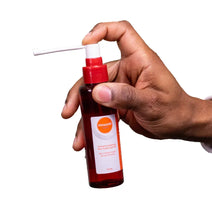Things to Know Before a Hair Transplant
Patients may need to cease certain medications, such as blood thinners, upon consulting with their doctor. The Hair Transplant Specialist may recommend shaving the recipient area to better access and place the individual hair follicles.
Evaluating the Patient's Hair Loss Pattern
Hair transplants help with thinning or bald areas by redistributing hair from denser regions, typically the back or sides of the scalp. These areas are usually not affected by DHT (dihydrotestosterone), a hormone related to male pattern baldness.
Determining the Donor Hair Source
Donor hair can come from the back of the head or other parts of the body, such as the chest, back, or facial hair.
The Hair Transplant Procedure
During the procedure, the multidisciplinary team makes necessary incisions on the scalp, which can result in a degree of discomfort. However, advancements in anesthesia and pain management techniques are applied to ensure patient comfort.
Anesthesia Administration
Anesthesia is administered sometimes in tandem with mild sedatives. Innovative pain relief methods can be employed to ensure the patient's comfort throughout the procedure.
Harvesting the Donor Hair
This step involves either Follicular Unit Extraction (FUE), where each hair unit is removed individually or Follicular Unit Transplantation (FUT), where a strip of skin is taken from the back or sides of the scalp.
Preparation of the Transplanted Hair Follicles
During the FUT procedure, the hair follicles are dissected under a microscope to ensure the integrity of each follicular unit. The grafts are sorted into groups based on the number of hairs they contain to optimize the natural appearance and density of the transplanted hair.
Creating the Recipient Sites
The Hair Transplantation Specialist makes tiny incisions at the transplant sites while matching the angle and direction of the existing hair for a natural-looking result.
Placing the Transplanted Hair Follicles
The final step of the procedure is the placement of the hair follicles into the recipient sites. The Hair Transplantation team carefully inserts the grafts.
Post-Transplant Care and Recovery
Recovery can vary based on the individual and the extent of the surgery, but standard measures often apply.
Advice personalized to your hair needs
Take our Hairtest to find the best products for your hair within 2 minutes!
Aftercare Instructions
These aftercare guidelines may include:
- Keep the scalp dry for the first 48 hours.
- Sleep in an elevated position to reduce swelling during the first week.
- Avoid touching, scratching, or rubbing the transplanted area to prevent dislodging grafts.
- Avoid strenuous activities for at least a month to prevent sweating and excessive movement of the scalp.
- Follow specific hair washing protocols.
Managing Pain and Discomfort
Patients may be prescribed pain relief medication. Some patients might experience itchiness; however, it's important to resist the urge to scratch. In the event of severe symptoms, relief measures may be advised, including medication.
Scabbing and Healing Process
Scab formation around the transplanted hair follicles is a natural part of the healing process and usually begins within the first few days. As the scalp heals, these scabs will start to fall off, typically within 7–10 days.
Expected Results and Hair Growth Timeline
The timeline for seeing the full results of a hair transplant can be broken down as follows:
- Day 0 to Day 5: Immediate post-operative recovery; bandages can be removed after 24 hours; swelling may occur.
- Week 1 to Week 4: Scabbing falls off and transplanted hairs may shed - a normal part of the process.
- Month 2 to Month 4: Initial signs of new hair growth begin.
- Month 6 to Month 9: A noticeable improvement in hair density.
- One Year and Beyond: Patients typically observe a fuller head of hair and continued hair growth.
Potential Risks and Complications
Potential complications include excessive bleeding, swelling, infection, sensation loss around the surgical sites, and the possibility of unsatisfactory results.
Conclusion
With the process of hair transplantation, its potential risks, and expected outcomes, you can make a well-informed decision about whether this procedure is right for you. It is advisable to consult medical professionals to help manage expectations.












